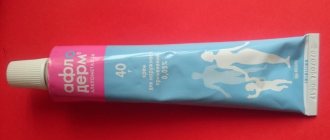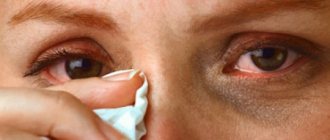The hypoallergenic patch is a safe product that is intended for people with very sensitive skin. It can be purchased at almost any pharmacy, so it is not difficult to find the product. An allergy to the patch itself is rare, but it is still possible if there is an individual intolerance. The person will complain of itching, inflammation and irritation of the dermis in the place where the product was glued. In such a situation, it is recommended to purchase a hypoallergenic variety in order to prevent the development of negative consequences. You just need to choose the most suitable type and then evaluate its advantages.
What attracts the product
Allergies to external means of protection most often occur in people suffering from atopic diseases in various forms and with weakened immunity. An undesirable reaction is expressed in redness, itching, and peeling on the area of the body where the patch is applied.
Similar manifestations can occur with prolonged use of products. The allergy trigger is usually the adhesive component or medications applied to the tape. A hypoallergenic product allows you to avoid complications due to specific qualities.
Peculiarities
How does a product with hypoallergenic properties differ from a regular adhesive plaster:
- The composition does not contain a self-adhesive adhesive component made from acrylic polymer.
- A product made of non-woven viscose does not affect air circulation.
- You can record the necessary data on the surface of the product using a marker.
- The adhesive plaster can mold to the anatomical shape of the body without leaving marks from pressure or friction.
- Thanks to the special elasticity formula, the product does not interfere with various movements of the human body.
- Manufactured in accordance with generally accepted standards and regulations for surgical materials.
- There is no need to use any tools to get rid of the patch yourself (you can tear it without scissors).
- The material does not allow the product to lose shape when drying or peel off when exposed to moisture.
Advantages
The product is very popular due to the following positive qualities:
- the possibility of use on the most sensitive areas of the skin (for example, on the face) without irritation and other undesirable reactions;
- perfect fixation on any part of the body without compromising freedom of movement or discomfort;
- no traces on the skin after removal, no damage or removal from the hair root;
- equal safety for adults, old people and children;
- resistance to temperature changes;
- the ability to transmit x-rays;
- ease of use at home or in a medical facility.
This product saves those who are allergic to the usual plaster.
Allergy patch
A report published in the Journal of Allergy and Clinical Immunology after a year of testing a transdermal patch to treat peanut allergies found that the method was safe and moderately effective in children and adolescents, but worked best in younger children.
Peanut allergy is growing like an epidemic: over the past 10–15 years, the number of sufferers in the United States, for example, has tripled. The disease manifests itself already in childhood. According to various estimates, today 1–3% of children in Western countries suffer from peanut allergy.
Peanuts rank high among the eight most allergenic foods (milk, eggs, fish, seafood, soy, tree nuts and wheat). Even small amounts of peanut protein are deadly for people with a peanut reaction.
A few years ago, doctors recommended completely eliminating peanuts from the diet of children with specific allergies. Recent studies have shown that small doses of peanuts in infancy help prevent the development of peanut allergies in the future. That is, experts gradually came to the conclusion that training the immune system to adequately perceive food that causes an allergic reaction is a step forward in the prevention of allergies. Thus the Band-Aid experiment was born. Held under the auspices of the National Institute of Allergy and Infectious Diseases (part of the US National Institutes of Health), it was designed to evaluate the safety and effectiveness of a transdermal patch that delivers small amounts of peanut protein into the body through the skin.
Randomized clinical trials were conducted at five sites. They involved 74 volunteers with peanut allergies ranging from 4 to 25 years old. The experiment participants were divided into three groups. One used a patch with a high dose of peanut protein, the second with a low dose, and the third with a placebo.
Every day, the experiment participants applied a new patch to their arm or between their shoulder blades.
After a year, the researchers assessed how safe a dose of peanut protein was for the subjects, which was 10 times higher than what they could afford before the experiment. As a result, 46% of participants who received low doses of the substance were able to withstand this amount of protein, and 48% of those who received a high dose of protein. In the control group there were only 12% of them. At the same time, the greatest progress was observed among the youngest program participants – children 4–11 years old. In adolescents and young people over 12 years of age, the therapeutic effect was much more modest.
The researchers noted that the immune response triggered by the peanut patch was similar to that observed with other experimental immunotherapies aimed at treating food allergies.
However, in some previous experiments, participants were asked to take peanut protein orally, but 10-15% of children and adults found this difficult to tolerate. With the help of a patch, the problem was solved. The experiment showed that the patch was well tolerated. Most patients experienced mild skin reactions such as itching or rash at the site where the patch was applied. No serious side effects were noted.
Another important result of the study was the high level of patient compliance when using the patch.
“The high degree of compliance with medical prescriptions indicates that the patch is easy to use, convenient and safe. The results of the experiment support the need for further research into cutaneous immunotherapy as an innovative approach in the treatment of peanut allergy,” said study co-author Dr. Marshall Plaut of the Division of Allergy, Immunology and Transplantation at the National Institute of Allergy and Infectious Diseases.
The trial demonstrated that the immunotherapy treatment was "potentially effective," but further study was needed to determine "whether minor clinical changes in participants' condition would translate into more significant changes as the duration of treatment increased," the study said.
Experts also noted that a larger study involving more children is needed before this method is recommended for clinical use. The patch has not yet been approved by the US Food and Drug Administration.
Source: MNT, Associated Press
Who can and cannot use it
Hypoallergenic skin protection products can be used by people of any age, both with serious illnesses and minor injuries.
Preferably suitable for the following categories of patients:
- diabetics;
- To old people;
- cancer patients;
- persons prone to allergic reactions;
- newborns and small children under 3 years of age;
- persons suffering from dermatitis and other mild skin pathologies;
- patients requiring long-term use of adhesive plaster after injuries, operations, etc.
What are patches usually used for?
- for closing the edges of incised wounds for better healing;
- for closing minor skin lesions and surgical incisions;
- to stabilize scar formations of postoperative origin.
Before use, you must ensure that there are no contraindications, which may include:
- deep skin damage and burns;
- severe eczema and atopic dermatitis;
- individual intolerance to components in the product.
Characteristic
Surgical plaster comes in different sizes, with the most popular being 5 cm by 5 mm. It is suitable for many situations, so it is considered universal. In this case, the length can vary from 1.5 to 9 mm, and the width - from 1.25 to 9 cm.
The patch is often white in color, but a flesh-colored color is also found. The product is produced in the form of a roll, and the canvas itself is wound on a cardboard base or on a plastic dispenser.
Hypoallergenic patches in the following situations:
- A person has an allergic reaction to certain components that are present in a regular patch.
- The product should be used for a newborn baby.
- The patient has inflammatory processes on the skin.
- Has diabetes mellitus.
The product can be easily used even by a child if an injury has occurred - a bruise, a cut. It has many advantages, so it is increasingly used by patients.
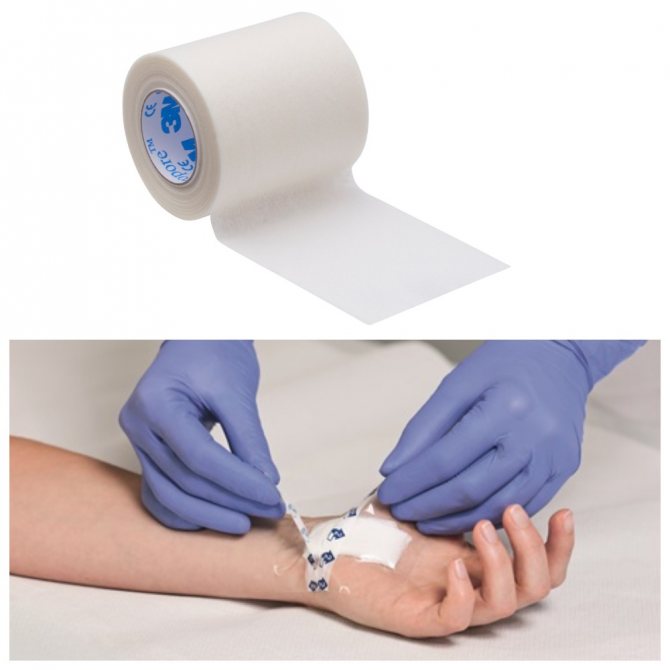
Product varieties
Hypoallergenic products are available in different types, the difference between which is the main material of manufacture. Their characteristics:
- Hypoallergenic fabric-based adhesive plaster: used by medical personnel in hospitals for fixing various devices (probes, catheters, tampons), for tightening surgical wounds and cuts. They are breathable and moisture resistant, can be removed without pain, and do not leave marks. The hypoallergenic high-quality fabric patch is breathable and can be used for a long time without discomfort.
- Products made from silk: used on the delicate skin of infants and young children, and on thin skin of the elderly. They are used to fix tampons and bandages, remove surgical sutures, provide first aid for injuries to various parts of the body, fingers and toes, and seal umbilical hernias in infants.
- Plasters with a cellulose base: used as a reinforced means of fixing large bandages on the face, for securing catheters and tubes. Equally suitable for young children and the elderly. These patches can protect defects, cuts or other damage to the skin, and cover puncture sites.
- Plasters on a polymer base: used for fixing large bandages on various parts of the body. They make it possible to monitor the quantity and quality of fluids inside the tubes of life support devices and catheters, do not leave fingerprints, and are easily removed from the body.
fabric based

paper based

silk based

polymer based

made of porous transparent film

anti-allergenic plaster of the required length, width and color is freely sold in pharmacies at a low price. White or flesh-colored products are often used.
There is a hypoallergenic transparent patch that allows you to visually control the wound surface.
bodily
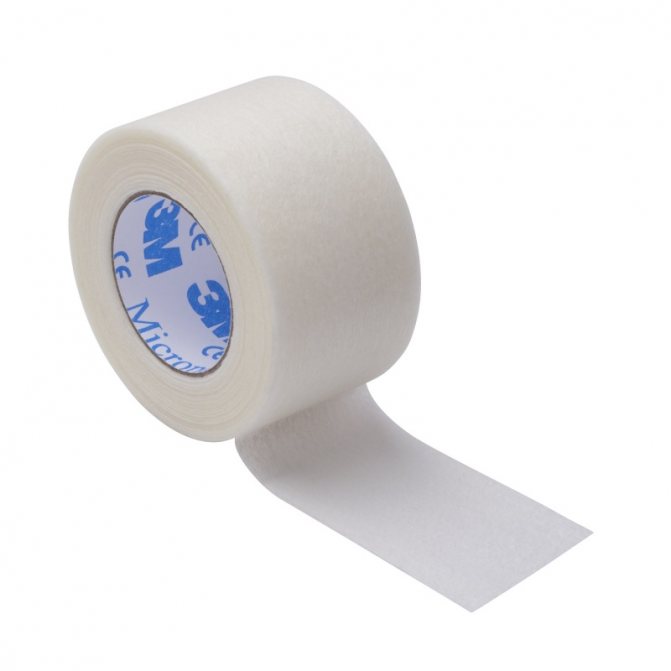
white
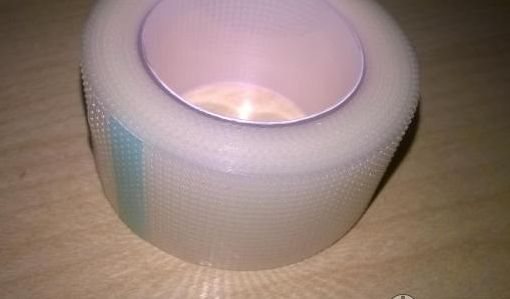
transparent
Effective methods and general rules of treatment
The first step to take if you are allergic to the patch is to stop exposing your skin to it. With a mild degree of damage, you can stop the symptoms on your own. Rinse the skin with distilled water or an antiseptic solution (Furacillin), dry the affected area. Do not use tap water. It contains chlorine ions, which create an additional source of an allergic reaction.
Medications
If itching, redness, or rashes occur, local treatment of the skin with antihistamine and anti-inflammatory ointments or creams is recommended:
- Gistan;
- Histamycin;
- Fenistil;
- Solcoseryl;
- La Cree.
To speed up skin regeneration and relieve pain, use:
- Bepanten;
- Panthenol.
For oral use, your doctor may prescribe antihistamines:
- Tavegil;
- Telfast;
- Kestin;
- Cetrin;
- Eden.
Bleeding wound areas of the skin are treated with special drying lotions. Severe cases of allergies require the use of steroid drugs:
- Lokoid;
- Prednisolone;
- Hydrocortisone.
Traditional medicine recipes
For mild allergies, it is possible to use non-traditional remedies that help alleviate the patient’s condition, soothe the skin, and speed up its healing.
Proven recipes:
- Place a washed plantain leaf on the affected area of the skin. Change it after an hour.
- Brew 1 teaspoon of dill seeds in a glass of water. Wash affected skin areas 2 times a day. You can apply fresh dill sprigs to irritated areas for 15 minutes.
- Infuse 10 bay leaves in ½ liter of boiling water. Moisten a cotton pad with the infusion and wipe the damaged skin.
- For oral administration, brew 1 spoon of string in a glass of water. Drink instead of tea 2-3 times a day.
- To soothe the skin, relieve itching and hyperemia, make a daily 10-minute compress of chamomile decoction or green tea.
Proper Use
Instructions for use are issued along with the product at the pharmacy. Using an adhesive plaster in everyday life is easy even for a child; to do this, you need to follow these steps:
- Cut the size of patch needed to cover the damaged area of skin or take a whole product of the required size.
- Stick on the damaged, previously cleaned surface of the body.
- It is better to remove hairs from the area of application, try not to affect papillomas and moles.
- To successfully remove the patch, you can soak its edges with an alcohol solution.
- If allergic symptoms occur, remove the bandage fasteners and take an antihistamine.
The anti-allergenic patch has a number of advantages over conventional means of protecting the skin and fixing bandages. It does not cause inconvenience, does not interfere with body movements, it can be safely used in adults and children, and long-term use in postoperative patients helps to avoid diaper rash. The range of such patches is huge; you can choose them at any pharmacy.
Production of hypoallergenic patch
The ZM company, which produces adhesive plasters, has been developing unique drugs for various needs for more than a century. More than 80 thousand are registered in its state. workers who are scattered in more than 60 countries around the world.
Today, it is the ZM company that occupies a leading position in the production of adhesive plasters, which are used not only in everyday life, but also in medicine. The patch produced by the Micropore company still has no analogues in the whole world.
The company has been producing a medical adhesive plaster that does not cause allergies for about 40 years, and if you collect all the products produced during this time, it will be possible to wrap the planet Earth more than 500 times.
Symptoms and stages
Degrees of burns and their signs
Most often, the first symptoms of a pepper plaster burn occur on the area of the skin that was directly under the product. In such places there is redness, burning and itching of the skin. But such symptoms may disappear on their own after 2-3 days. If the skin is affected deeper, peeling and small blisters form. In this case, the skin may turn red beyond the fixation of the patch, and swelling and dermatitis may appear on the affected area of the body.
Pepper plaster can cause burns of the following degrees:
In the mild stage, the symptoms may not have a pronounced character, just discomfort is observed. In the middle stage, the skin turns red, itches, peels and a rash similar to hives appears. With severe consequences from burns, ulcers, blisters appear, and sometimes the wound can bleed, which leads to an increase in body temperature and a general deterioration in well-being.
Symptoms
Typically, an allergy to the patch causes local symptoms. Skin manifestations may vary in severity.
- Easy. There is slight redness and mild itching. It goes away on its own if you remove the product.
- Average. Moderate itching is felt, redness spreads beyond the areas of contact with the patch, and the skin peels off.
- Heavy. The itching becomes unbearable, skin irritation intensifies and resembles a burn, blisters and ulcerative lesions of the skin appear, and the temperature rises.
In addition, other signs of allergy may be observed: sneezing, coughing, mucous discharge from the nose, redness and irritation of the conjunctiva, lacrimation. Sometimes with allergies, redness occurs in areas of the skin that have not been in contact with the patch.
Pepper products can cause severe allergic dermatitis, angioedema, and, if there is a predisposition, anaphylactic shock. Such conditions require emergency medical attention.
You should be especially careful if your child is allergic to the patch. Children cannot cope with the itching and scratch the affected area until it bleeds. Such wounds easily become infected, and this seriously complicates the course of allergies. Pediatricians do not prescribe pepper patch to treat children, as it can cause severe irritation. Parents should also not use it themselves.
Don't ignore mild symptoms of a patch allergy. With each subsequent use of medical material, they can intensify.
Effective methods and general rules of treatment
The first step to take if you are allergic to the patch is to stop exposing your skin to it. With a mild degree of damage, you can stop the symptoms on your own. Rinse the skin with distilled water or an antiseptic solution (Furacillin), dry the affected area. Do not use tap water. It contains chlorine ions, which create an additional source of an allergic reaction.
Medications
If itching, redness, or rashes occur, local treatment of the skin with antihistamine and anti-inflammatory ointments or creams is recommended:
To speed up skin regeneration and relieve pain, use:
For oral use, your doctor may prescribe antihistamines:
Bleeding wound areas of the skin are treated with special drying lotions. Severe cases of allergies require the use of steroid drugs:
Can there be an allergy to Paracetamol and how does it manifest itself? We have the answer!
Read about how to distinguish flowering from allergies in a newborn at this address.
Traditional medicine recipes
For mild allergies, it is possible to use non-traditional remedies that help alleviate the patient’s condition, soothe the skin, and speed up its healing.
- Place a washed plantain leaf on the affected area of the skin. Change it after an hour.
- Brew 1 teaspoon of dill seeds in a glass of water. Wash affected skin areas 2 times a day. You can apply fresh dill sprigs to irritated areas for 15 minutes.
- Infuse 10 bay leaves in ½ liter of boiling water. Moisten a cotton pad with the infusion and wipe the damaged skin.
- For oral administration, brew 1 spoon of string in a glass of water. Drink instead of tea 2-3 times a day.
- To soothe the skin, relieve itching and hyperemia, make a daily 10-minute compress of chamomile decoction or green tea.




